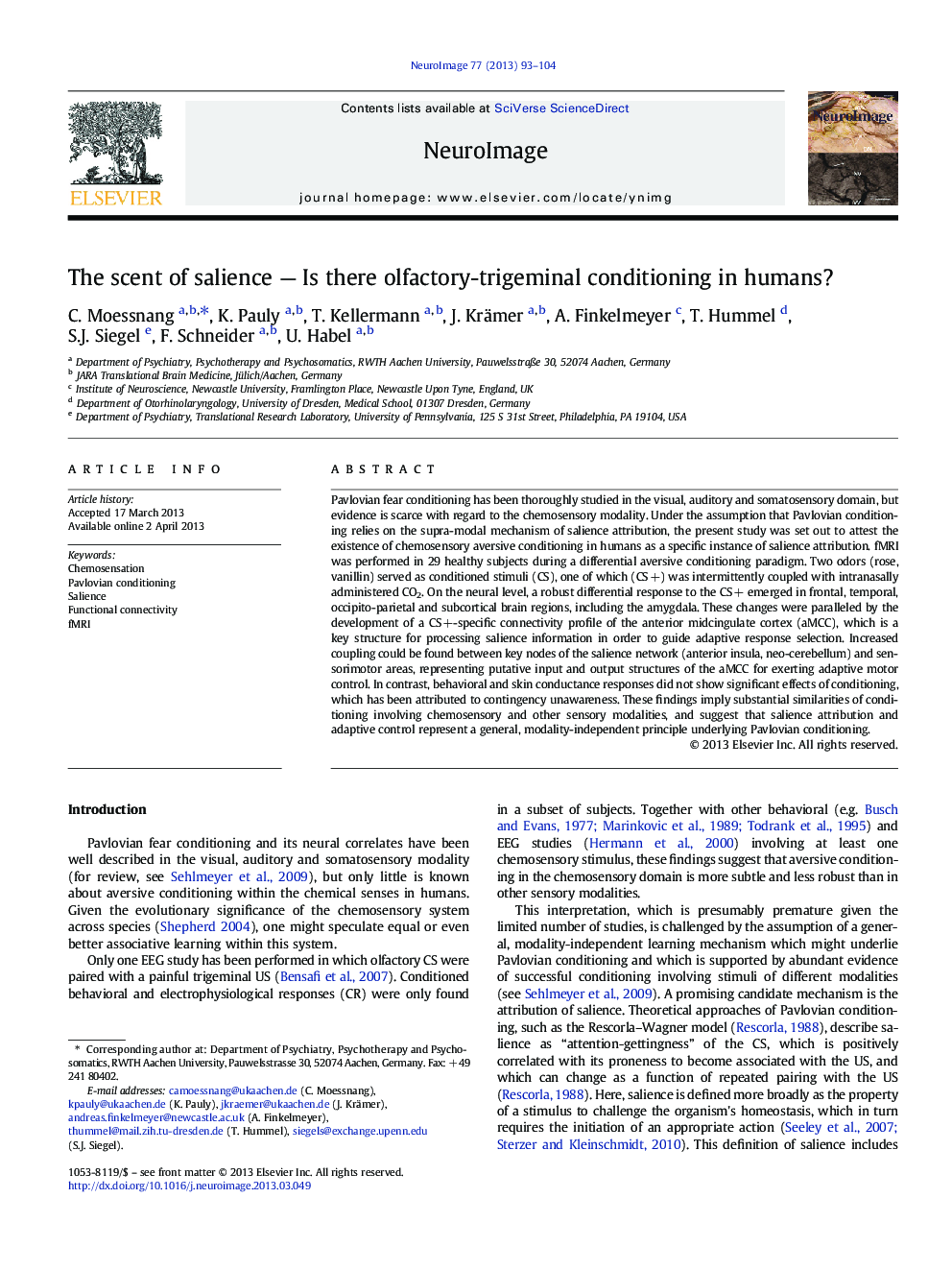| Article ID | Journal | Published Year | Pages | File Type |
|---|---|---|---|---|
| 6029589 | NeuroImage | 2013 | 12 Pages |
Abstract
Pavlovian fear conditioning has been thoroughly studied in the visual, auditory and somatosensory domain, but evidence is scarce with regard to the chemosensory modality. Under the assumption that Pavlovian conditioning relies on the supra-modal mechanism of salience attribution, the present study was set out to attest the existence of chemosensory aversive conditioning in humans as a specific instance of salience attribution. fMRI was performed in 29 healthy subjects during a differential aversive conditioning paradigm. Two odors (rose, vanillin) served as conditioned stimuli (CS), one of which (CSÂ +) was intermittently coupled with intranasally administered CO2. On the neural level, a robust differential response to the CSÂ + emerged in frontal, temporal, occipito-parietal and subcortical brain regions, including the amygdala. These changes were paralleled by the development of a CSÂ +-specific connectivity profile of the anterior midcingulate cortex (aMCC), which is a key structure for processing salience information in order to guide adaptive response selection. Increased coupling could be found between key nodes of the salience network (anterior insula, neo-cerebellum) and sensorimotor areas, representing putative input and output structures of the aMCC for exerting adaptive motor control. In contrast, behavioral and skin conductance responses did not show significant effects of conditioning, which has been attributed to contingency unawareness. These findings imply substantial similarities of conditioning involving chemosensory and other sensory modalities, and suggest that salience attribution and adaptive control represent a general, modality-independent principle underlying Pavlovian conditioning.
Related Topics
Life Sciences
Neuroscience
Cognitive Neuroscience
Authors
C. Moessnang, K. Pauly, T. Kellermann, J. Krämer, A. Finkelmeyer, T. Hummel, S.J. Siegel, F. Schneider, U. Habel,
